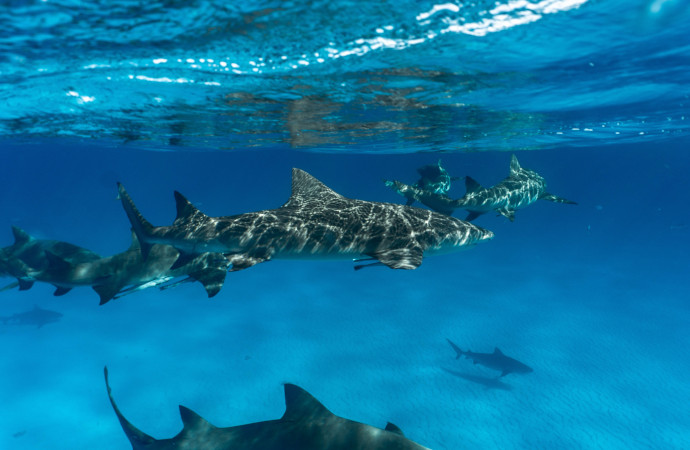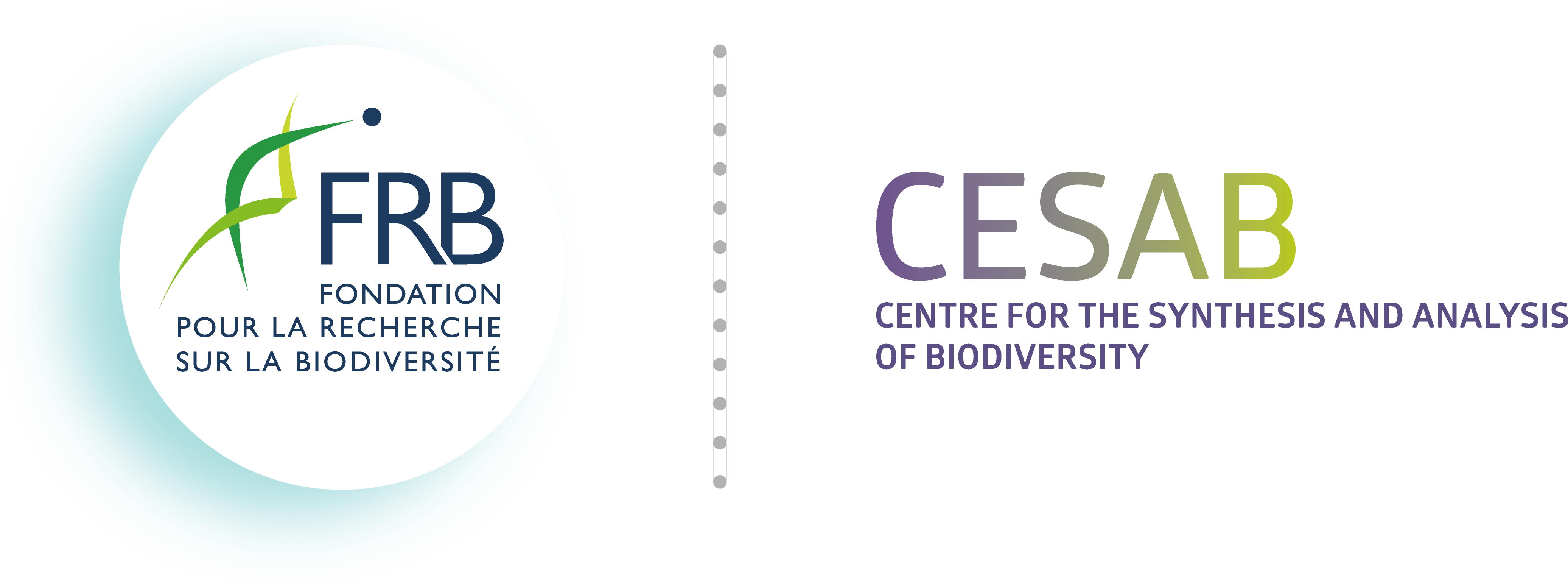PELAGIC
Prioritizing ecologically significant and globally important marine conservation areas for vertebrates: synthesizing the best available knowledge to inform management and policy

Declines in marine predators intensified globally in the 1950’s, as industrial fleets targeted previously inaccessible populations of sharks, tunas, and billfishes. These spatially extensive fisheries continue to expand, while global catches continue to decline.
Given the difficulty of managing these fisheries sustainably, large no-take Marine Protected Areas (MPAs) have been proposed for halting and reversing these declines. These MPAs require knowledge of the critical habitats that maintain these predators and that are relatively immune from the effects of human disturbances. This crucial knowledge is currently severely limited since based primarily on species geographic distributions obtained through fishery catches that remain biased with untargeted species, unfished areas and deliberate underreporting.
Here, PELAGIC overcame this limitation by collecting the most up-to-date and complete information on the biogeography and habitat use of marine mammals, sharks and fishes. In particular, PELAGIC was able to :
- show that the body size and abundance of sharks are strongly correlated with the distance to anthropogenic pressures and in particular the distance to fishing ports;
- highlight the need to establish new strategies for MPAs, taking into account the preferential habitats of marine predators, which are essential for maintaining biodiversity in our oceans and the functioning of oceanic systems.
The researchers also identified specific areas that, if protected, would safeguard over 80% of the habitats for endangered marine species, and increase fishing catches by more than eight million metric tons. These results, published in Nature in 2021 show that a targeted strict ocean protection can contribute to a more abundant supply of healthy seafood and provide a cheap, natural solution to address climate change—in addition to protecting embattled species and habitats.

Predictions of vertebrate species richness in the Indo-Pacific (Letessier et al., 2019)

© CESAB Pelagic

PI:
David MOUILLOT – University of Montpellier (France)
Postdoc:
Clara PERON – University of Montpellier (France)
PELAGIC brings together specialists in modelling, marine biology and biogeography.
PELAGIC was selected from the 2011 call for proposals. The project selection process was carried out by a committee of independent experts.
[09] Mouillot D, Velez L, Albouy C, Casajus N, Claudet J, Delbar V, Devillers R, Letessier TB, Loiseau N, Manel S, Mannocci L, Meeuwig J, Mouquet N, Nuno A, O'Connor L, Parravicini V, Renaud J, Seguin R, Troussellier M & Thuiller W (2024) The socioeconomic and environmental niche of protected areas reveals global conservation gaps and opportunities. Nature Communications, 15, 9007. DOI: 10.1038/s41467-024-53241-1.
[08] Letessier TB, Mannocci L, Goodwin B, Embling C, de Vos A, Anderson RC, Ingram SN, Rogan A & Turvey ST (2023) Contrasting ecological information content in whaling archives with modern cetacean surveys for conservation planning and identification of historical distribution changes. Conservation Biology, 37, e14043. DOI: 10.1111/cobi.14043.
[07] Mannocci L, Villon S, Chaumont M, Guellati N, Mouquet N, Iovan C, Vigliola L & Mouillot D (2022) Leveraging social media and deep learning to detect rare megafauna in video surveys. Conservation Biology, 36, e13798. DOI: 10.1111/cobi.13798.
[06] Sala E, Mayorga J, Bradley D, Cabral RB, Atwood TB, Auber A, Cheung W, Costello C, Ferretti F, Friedlander AM, Gaines SD, Garilao C, Goodell W, Halpern BS, Hinson A, Kaschner K, Kesner-Reyes K, Leprieur F, McGowan J, Morgan LE, Mouillot D, Palacios-Abrantes J, Possingham HP, Rechberger KD, Worm B & Lubchenco J (2021) Protecting the global ocean for biodiversity, food and climate. Nature, 592, 397–402. DOI: 10.1038/s41586-021-03371-z.
[05] Letessier TB, Mouillot D, Bouchet PJ, Vigliola L, Fernandes MC, Thompson C, Boussarie G, Turner J, Juhel J-B, Maire E, Caley MJ, Koldewey HJ, Friedlander AM, Sala E & Meeuwig JJ (2019) Remote reefs and seamounts are the last refuges for marine predators across the Indo-Pacific. PLoS Biology, 17, e3000366. DOI: 10.1371/journal.pbio.3000366.
[04] Dunn DC, Ardron J, Bax N, Bernal P, Cleary J, Cresswell I, Donnelly B, Dunstan P, Gjerde K, Johnson D, Kaschner K, Lascelles BG, Rice J, von Nordheim H, Wood L & Halpin PN (2014) The Convention on Biological Diversity's Ecologically or Biologically Significant Areas: Origins, development, and current status. Marine Policy, 49, 137–145. DOI: 10.1016/J.MARPOL.2013.12.002.
[03] Selig ER, Turner WR, Troëng S, Wallace BP, Halpern BS, Kaschner K, Lascelles BG, Carpenter KE & Mittermeier RA (2014) Global priorities for marine biodiversity conservation. PLoS ONE, 9, e82898. DOI: 10.1371/journal.pone.0082898.
[02] Williams R, Grand J, Hooker SK, Buckland ST, Reeves RR, Rojas-Bracho L, Sandilands D & Kaschner K (2014) Prioritizing global marine mammal habitats using density maps in place of range maps. Ecography, 37, 212–220. DOI: 10.1111/j.1600-0587.2013.00479.x.
[01] Magera AM, Mills Flemming JE, Kaschner K, Christensen LB & Lotze HK (2013) Recovery trends in marine mammal populations. PLoS ONE, 8, e77908. DOI: 10.1371/journal.pone.0077908.
Mannocci L, Villon S, Chaumont M, Guellati N, Mouquet N, Iovan C, Vigliola L & Mouillot D (2021) Leveraging social media and deep learning to detect rare megafauna in video surveys. Conservation Biology, accepted. doi: 10.1111/cobi.13798.
- Press release: Mieux protéger la mégafaune marine grâce aux réseaux sociaux et à l’intelligence artificielle [FR], A better protection of marine megafauna through social networks and artificial intelligence [EN]
- French media: Cluster Maritime Nouvelle-Calédonie, Université Montpellier, Actuia
Sala E, Mayorga J, Bradley D, Cabral RB, Atwood TB, Auber A, Cheung W, Costello C, Ferretti F, Friedlander AM, Gaines SD, Garilao C, Goodell W, Halpern BS, Hinson A, Kaschner K, Kesner-Reyes K, Leprieur F, McGowan J, Morgan LE, Mouillot D, Palacios-Abrantes J, Possingham HP, Rechberger KD, Worm B & Lubchenco J (2021) Protecting the global ocean for biodiversity, food and climate. Nature, accepted. doi: 10.1038/s41586-021-03371-z.
- Press release: Protéger l’océan pour résoudre conjointement les crises du climat, de l’alimentation et de la biodiversité [FR], Study in Nature: Protecting the Ocean Delivers a Comprehensive Solution for Climate, Fishing and Biodiversity [EN]
- French media: Ifremer, Université Montpellier, CNRS, La Provence, Actu-Environnement, RFI, AJSPI, Yahoo, Futura-Sciences, Conso Globe, DestiMed, Figaro Nautisme, France24, Agri-Mutuel, Camaderie Limited, EuroNews, Marine & Océans, France Info.
- International press: National Geographic press release, Mongabay, Spacedaily, The Energy Mix, CM (Portugal), Noticias Ao Minuto (Portugal), Publico (Portugal), RTP (Portugal), Visao (Portugal), Le Journal de Montréal (Canada), Climate Home News (UK), BBC News (UK), Financial Times (UK), The Guardian (UK), The Independent (UK), Sky (UK), Coast FM (UK), Thomson Reuters Foundation (UK), Cosmos (Australia), Boersen Zeitung (Germany), Finanz Nachricten (Germany), Handelsblatt (Germany), Onvista (Germany), ProPlanta (Germany), Tagesspeigel (Germany), Klamm (Germany), Trends der Zukunft (Austria), Salzburger Nachricten (Austria), ORF (Austria), Wiener Zeitung (Austria), El Pais (Spain), Euronews (Belgium), Yahoo (USA), Earth (USA), New-York Times (USA), Time (USA), Smithsonian (USA), Inhabitat (USA), Futurity (USA), MarketWatch (USA), The Academic Times (USA), Saving Seafood (USA), Marine Link (USA), World Economic Forum (USA), Modern Ghana (Ghana), Semana (Columbia), Singapore News (Singapore), Straits Times (Singapore), Estadao (Brazil), Duurzaam Nieuws (Netherlands), NRK (Norway), C24 (Czech Republic), El Siglo (Mexico), Eco-Business, Quatar Tribune (Quatar), Wyborcza (Poland), Le Donne del Food (Italy), I3 Investor (Malaysia), Total Croatia News (Croatia), Marasi News (UAE), HVG (Hongrie), Heaven (Spain), Videnskab (Germany), Technology Times, Tierwelt (Suisse), Unfold Times (USA), Science Alert, MSN, The Middle East North Africa Financial Network, Gulf times (Quatar), Neueus Deustchland (Germany), Japan Today (Japan), Portal Grada Kastela (Croatia), Lider Media (Croatia), The Jordan Times, OltNews (USA), Qubit (Croatia), IFL Science, The Entrepreneur (USA), Knack (Belgium), Vaol (Hongrie), GeosNews (Italy), You Feed It! (Italy), GreenReport (Italy), AllAfrica, The Seatlle Times (USA), Education News Canada (Canada), Coastal News Today (USA), East African Business Week, Popular Science (USA), Nach Welt (Germany), Chron (USA), Tekniikanmaailma (Finland), The Wahington Post (USA), EcoWatch (USA), Wochenblatt (Germany), DNYUZ (USA), Global Banking and Finance Review (UK), Firstpost (India), Newsrust (USA), Mondiaal Nieuws (Belgium), Dhaka Tribune (Bengladesh), Bengladesh Sagbad (Bengladesh), ECEEE (Sweden), St Catherines Standard (Canada), The Hamilton Spectator (Canada), Toronto Star (Canada), AzoLifeSciences (UK), The Japan Times (Japan), The European Sting (South Africa), The Swaddle (India), Sight Magazine (Australia), Press Form (USA), 24 Globe News (India), Bilyonaryo (Philipines), RTL Today (Luwembourg)
Letessier TB, Mouillot D, Bouchet PJ, Vigliola L, Fernandes MC, Thompson C, et al. (2019) Remote reefs and seamounts are the last refuges for marine predators across the Indo-Pacific. PLoS Biol 17(8): e3000366. https://doi.org/10.1371/journal.pbio.3000366
- Press release: Les monts sous-marins éloignés de l’Homme comme derniers refuges des prédateurs marins
- French media: Sciences et Avenir, Université Montpellier
- International media: Science Daily
